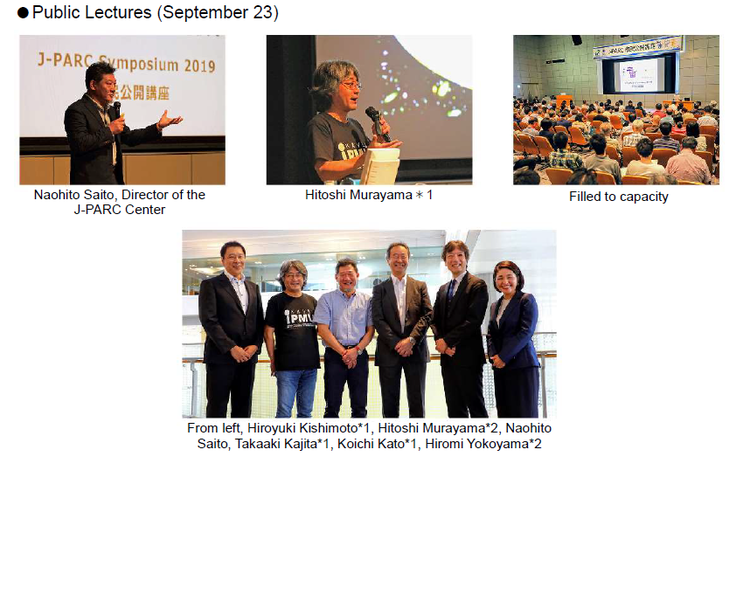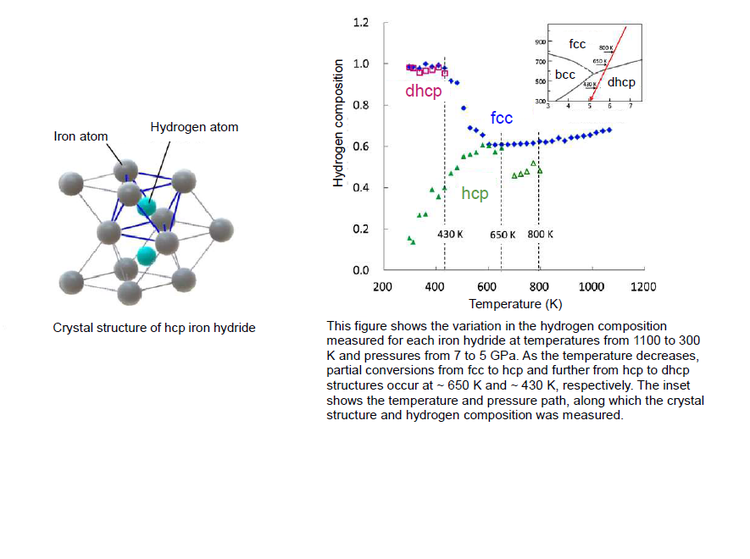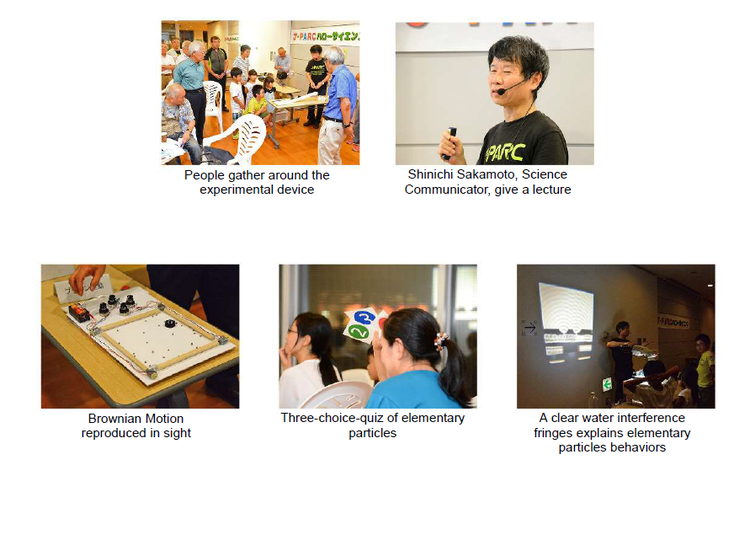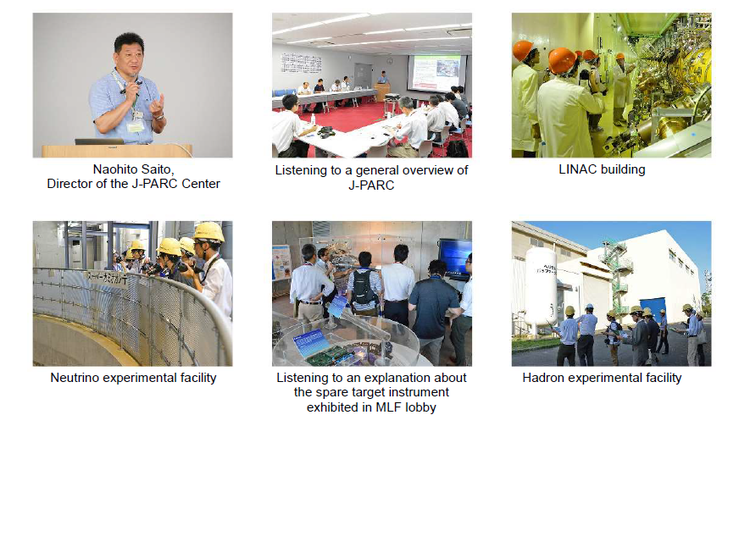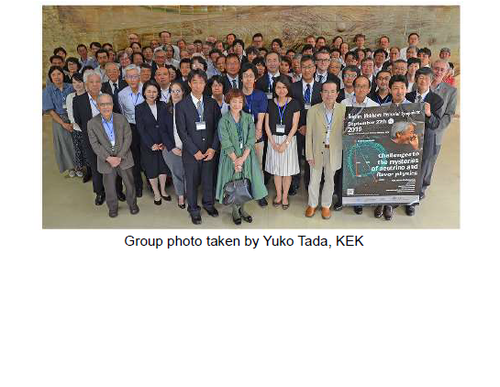J-PARC NEWS September 2019 (Issue #173)
■ J-PARC 10th Anniversary Ceremony, J-PARC Symposium 2019 (September 23 to 26, Tsukuba International Congress Center)
The “10th Anniversary J-PARC Symposium” was held at the Tsukuba International Congress Center to commemorate 10 years of operations at the entire J-PARC facility. A public lecture, anniversary ceremony, commemorative lectures and panel discussions were held during the symposium. On the first day, the public lecture on the topic “Searching for the origins of the Universe, Matter and Life” drew around 330 guests who filled the venue. The lecture was headed by J-PARC Center Director Naohito Saito and four distinguished researchers*1 involved in cutting-edge studies in their respective fields, which was followed by a lively question-and-answer session. A panel discussion titled “Role of science in societies, role of Japan in the world” held on the second day included four university professors*2 from Japan and abroad as panelists, who discussed in depth the current state of science in Japan and how to best address future challenges. This was followed by the anniversary ceremony which invited approximately 600 attendees from Japan and overseas, including special guests, researchers and center personnel. The commemorative lecture was given by Takaaki Kajita, distinguished University Professor at the University of Tokyo and recipient of the 2015 Nobel Prize in Physics, who talked about neutrino of elementary particles and J-PARC.” A number of invited lectures and parallel sessions were held between September 24 and 26, covering topics in fields such as particle-nuclear physics, material and life sciences, accelerators and nuclear transmutation where researchers presented their results. The question-and-answer sessions were energetic and the symposium ended with a great success. A tour of J-PARC held on the 27th drew around 30 participants, mainly researchers from overseas who were visiting the facility for the first time.
*1 Hitoshi Murayama, Professor, Kavli IPMU, University of Tokyo, University of California, Berkeley; Koichi Kato, Director, Exploratory Research Center on Life and Living Systems, National Institutes of Natural Sciences; Hiroyuki Kishimoto, General Manager, Chemical Analysis Center, Sumitomo Rubber Industries, Ltd.; and Takaaki Kajita, Director, Institute for Cosmic Ray Research, University of Tokyo
*2 Hiroshi Ooguri, Director, Kavli IPMU, University of Tokyo; Shinichi Nakazawa, Religious historian, Project Professor, Meiji University; David Wark, Professor, University of Oxford; and Miyoko Watanabe, Deputy Executive Director, Science Council of Japan
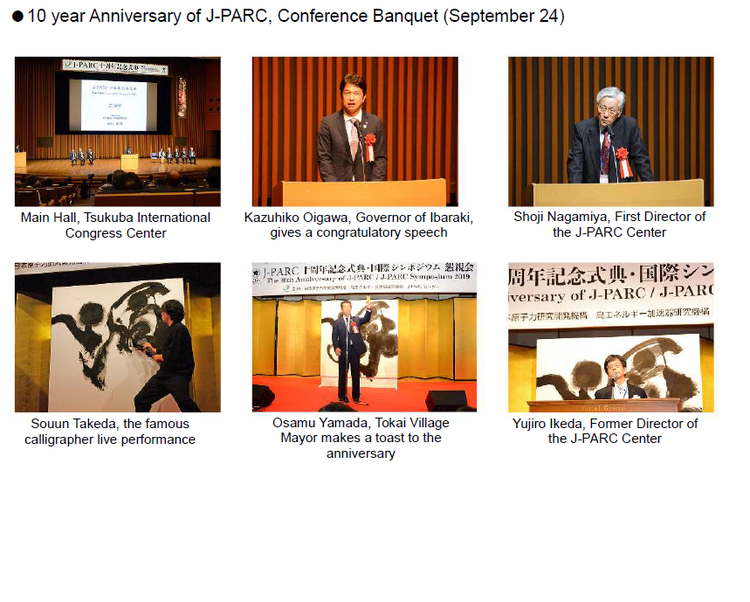
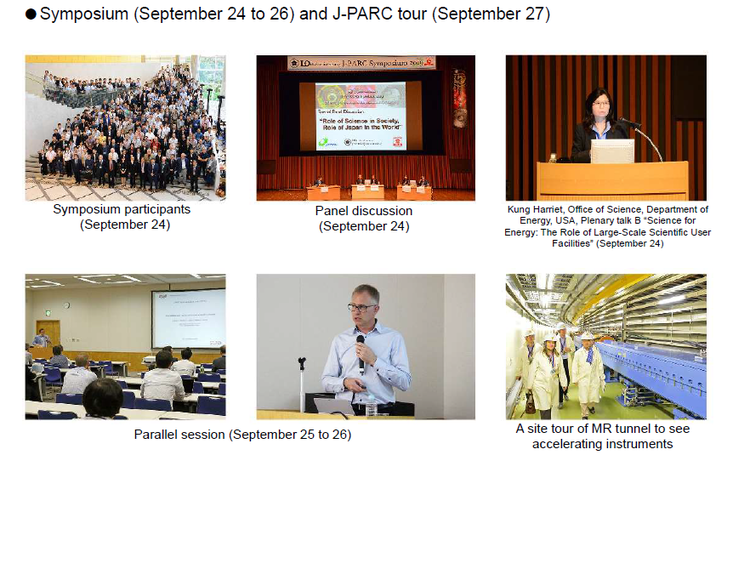 ■ Quantum Interference Effects and Lattice Defects on Magnetic Quasiparticles Observed by Using Neutron Scattering (August 21, press release)
■ Quantum Interference Effects and Lattice Defects on Magnetic Quasiparticles Observed by Using Neutron Scattering (August 21, press release)
Magnetic materials are used in a broad range of applications including magnetic media, magnetic heads and permanent magnets, and the magnetism acting behind these applications could be explained with classical physics. There have been recent advances in our understanding of the quantum mechanics behind magnetism, and if this can be applied in practice we hope to be able to develop a new range of magnetic devices. The team of scientists at Tokyo Institute of Technology (Tokyo Tech) *1, Aoyama-Gakuin University, and J-PARC Center investigated the magnetic excitation of dimers, coupled electron spins of two cobalt ions within the quantum magnet Ba2CoSi2O6Cl2 by means of inelastic neutron scattering experiments using J-PARC’s AMATERAS.
Dimer magnetic excitation can be explained by hypothetical magnetic quasiparticles called triplons, which ordinarily propagate throughout the crystal as waves. In the experiment, they found the three types of excitation spectra shown in the below figures. Observed excitation energies are independent of wavenumber, which suggests that, instead of propagating as waves, the excitation becomes localized in specific positions throughout the crystal structure. In essence, inter-dimer exchange interactions exert slightly different forces on one another, which leads to dimers that are unsteady and in a frustrated state. In the “perfect frustration” state, triplon which normally propagates throughout the magnetic substance as waves, results in an atomic deadlock as predicted, and this is verified by using inelastic neutron scattering experiments.
Furthermore, the excitation at 5.8 meV shows the highest intensity and its intensity is independent of wavenumber, and the excitation at 5.8 meV is considered to be triplet excitation by its nature of this material and there is no other excitation states than this, which indicates that all the dimers are equivalent. Meanwhile, the excitations at 6.6 and 4.8 meV shows two types of quantum mechanics excitation states being interacted between undimerized spin and dimers due to lattice defects, and their scattering intensities are dependent on wavenumber, as the excitation spectra and their dependence of wavenumber, which are calculated based on the interaction model, match the results obtained with the experiments.
The two types of observed exchange interactions—interference effects and lattice defect effects—are both quantum effects of magnetic substances. The concept of quantum magnetic substances will become better defined in the future, and is hoped will lead to a trend in development of new magnetic devices.
For the further details, please refer to https://doi.org/10.1103/PhysRevLett.123.027206, and Tokyo Tech*1 official website.
■ Discovery of Iron Hydride Hidden Behind the Conventional Phase Diagram (August 23 “Scientific Reports” online version)
Iron hydride has been intensively studied under high-temperature and high-pressure conditions for half a century as a typical metal hydride and an endmember of the constituents of the Earth’s core. The crystal structures found so far are body-centered cubic (bcc), face-centered cubic (fcc) and double hexagonal close-packed (dhcp) structures. Hexagonal close-packed (hcp) structure, which is the dominant structure of pure iron, is not present in the conventional temperature–pressure phase diagram of iron hydride. In the early studies, the fcc and dhcp hydrides were formed by hydrogenation of iron metal with excess amount of hydrogen. Under a limited amount of hydrogen conditions, hcp hydride was found to form. Neutron diffraction measurements were performed with iron deuteride*, instead of iron hydride, to determine the composition of hcp iron hydride (hcp FeHx) at High-Pressure Neutron Diffractometer PLANET, J–PARC. It was shown by the structural refinement of the observed diffraction profiles that the hydrogen composition x ranges from 0.1 to 0.6 depending on temperature and dissolved hydrogen atoms occupy partially the octahedral interstitial sites, vacant spaces surrounded by six iron atoms, in the hcp metal lattice. The metal lattice expands by ~10% in volume due to dissolved hydrogen atoms. This lattice expansion is significantly larger than those reported for fcc and dhcp iron hydrides. The hydrogen composition x of hcp hydride increases with increasing temperature, whereas those of fcc and dhcp hydrides decrease with increasing temperature. This remarkable structural dependence of hydrogen solubility is a future subject of theoretical study. The further experimental investigations on iron hydride at temperatures and pressures close to those corresponding to the Earth’s inner core will provide insight into possible light-element solutes in the actual inner core. For further details, please refer to https://www.nature.com/articles/s41598-019-48817-7.
* In neutron diffraction measurements on substances containing hydrogen, hydrogen is replaced with its isotope “deuterium” for obtaining high quality diffraction patterns with less background levels.
■ 32nd J-PARC Hello Science—Watch and Learn! Particle Wonderland (August 30, Tokai Industry and Information Plaza “iVil”)
Wouldn’t it be great if we could see ultramicroscopic particles? Let’s use models to find out! Hello Science ran a workshop in August to find out more about particles, with Public Relations Section Science Communicator Shinichi Sakamoto showing his special fact-finding experiments. Elementary school students participated this month, indicating a growing interest in Hello Science. Particles move about in a random manner (Brownian motion) which is how we first discovered molecules. Sakamoto demonstrated this motion using caps of plastic bottles as particles with tiny steel balls representing molecules moving around randomly. Other models included the Rutherford scattering experiment to demonstrate the structure of atoms, and the double-slit experiment was also popular. Did this new approach used by Hello Science make it easier to understand the complex idea of particles?
■ 5th J-PARC Media Meeting (September 10, J-PARC)
J-PARC held its 5th Media Meeting on September 10 showcasing the cutting-edge research activities being conducted at the center, with eight members of the press from six media companies in Ibaraki and around Japan attending. J-PARC Center Director Naohito Saito provided a general overview of J-PARC and its fields of research, followed by researchers themselves presenting details of their research topics “International collaboration experiment on rare neutral kaon decay (KOTO Experiment)” at Hadron Experimental Facility and “Material science research contributing to solid-state refrigerant technology without CFC substitutes that cause global warming” being conducted at MLF (Material and Life Science Experimental Facility). This was followed by a tour of the facilities including the LINAC accelerator tunnel, Neutrino first near detector, MLF test hall and Hadron Experiment Facility. A question-and-answer session was held at the end to further increase understanding of J-PARC activities.
■ Koichiro Nishikawa Memorial Symposium (September 27, Kobayashi Hall, KEK)
Former J-PARC Center deputy director and KEK professor emeritus Koichiro Nishikawa passed away in November 2018. The “Koichiro Nishikawa Memorial Symposium” was held at the KEK Tsukuba Campus Kobayashi Hall on September 27 to commemorate his accomplishments. Professor Nishikawa made outstanding contributions to research at J-PARC with his strong leadership skills, including pioneering research into neutrino physics as the spokesperson for the “T2K” experiment, a long baseline neutrino oscillation experiment that began in April 2010 involving around 500 researchers from 12 countries using facilities at J-PARC in Tokai-mura and the Super-Kamiokande detector of the Institute for Cosmic Ray Research, University of Tokyo located in Kamioka Town in Hida, Gifu Prefecture. Many researchers from overseas also attended the symposium in appreciation of Professor Nishikawa’s achievements.

